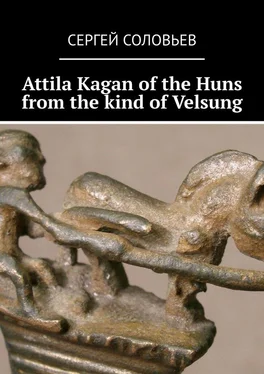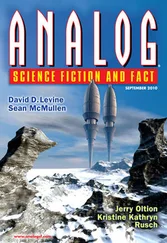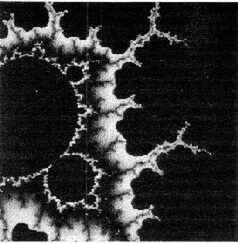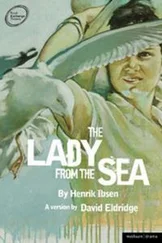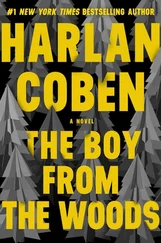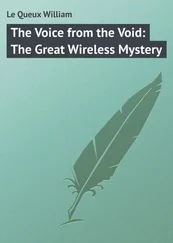In the Bible, the Cimmerians are known as the Yaphetic people of Homer. In the Ossetian Nart epic, the Cimmerians are referred to as the gumirs that preceded the Narts. And such a people is mentioned later in the name CIMBRA, in connection with the attack of this people on Italy. The language of this tribe did not survive, so no one was going to study it, among the Romans there were never scientists standing next to Herodotus or Strabo because of curiosity, openness to other cultures and lack of neglect of others.
Scythians (Greek: Σκύθης, Σκύθοι, self-name: Skolotoi – an ancient Iranian-speaking people that existed in the VIII century BC – IV century CE. Scythians did not have written language, only a few words are known from their language By the way, the small Skolt people still live in the North of Norway, that is, it is very likely that some of the Scythian ancestors migrated from the Far North to the south, as in the case of the Cimmerians and the Huns. Some of the Scythians lived in the steppe zone of the Northern Black Sea Coast from the Danube to the Don named in ancient Greek sources Scythia, and in the regions of Tuva and Altai, Even in the time of Peter the Great, numerous artifacts of Scythian culture were found. Many tribes and peoples were both in alliance with the Scythians and hostile to them. The Scythians reached the very borders of Mongolia, and the Scythians of Siberia and the Far East are bashfully referred to as “Pseudo-Scythians.” from the works of ancient authors (such as Herodotus, Hippocrates, Pliny the Elder Zhang Qian), archaeological excavations and genetic research Sarmatians were related to the Scythians, because the Sarmatians are the same royal Scythians, only worshiping the Mother Goddess, Tsaritsa – Heaven, so called Sarmatians.
The origin of the ethnonym
Many scientists, including F. Justi, M. Fasmer, O. Semereni and V. I. Abaev, raise the word * skuta to the Indo-European root with the meaning shoot. In particular, V.I. Abaev compares the word skuta with the Germanic * skut- (archery, shoot) In turn, K.T. Vitchak and S.V. Kullanda explain the Scythian self-name as follows: Greek. Σκόλοτοι <* skula-ta <* skuδa-ta <* skuda-ta. But this is rather an attempt to pull what is desired. But it is not a fact, but a fact, is a small tribe in Norway, living now, not far from the Kola Peninsula, and called SKOLTS. That is, cleaved skolts are those that came from the Kola Peninsula, from Kola, one of the names of the Sun. Hence the name of one of the kings of the ancestors of the Scythians, but rather, deities, Kolaksai, literally, “Sun-Tsar”. The transition of the ancient Iranian * δ to the Scythian * l as a characteristic feature of the Scythian language is also confirmed by other Scythian words, for example, Scythian. Παραλάται – tribal name meaning, according to Herodotus (IV, 6), the ruling Scythian dynasty and explained to him in other places with the help of the expression Σκύθαι βασιλητοι, that is, “royal Scythians”;
O. N. Trubachev linked the self-name of the Scythians with the root with the meaning “cut off, split off’ (cf. Ossetian ironic sk’˚yd, Digorian (æ) sk’ud “torn off’). And this concept is close to Russian, in the meaning of “splinter”, but again the path leads us to the Kola Peninsula.
Anthropologically, there are two groups of European Scythians – forest-steppe and steppe. Forest-steppe Scythians differed from the Black Sea by a narrower and longer skull, a narrow, less high and sharply profiled face. These features bring them closer to the narrow-faced local population of the Late Bronze Age. The steppe are more tall, with a wider and shorter skull. It is obvious that the narrow-faced type is the Andronovites, newcomers from the Ob river basin, the Huns-Hans, and the higher-faced ones with a wide and short skull are Ugric peoples.
There are two hypotheses that explain this heterogeneity – autochthonous and migration. According to the first, in the steppe Scythians, with a high density and mobility of the population, due to increased intragroup mixing and crossbreeding with neighboring groups, brachycephalization began. According to another point of view, the difference between steppe groups and forest-steppe groups is associated with their different origin. Forest-steppe Scythians are autochthonous and show the greatest resemblance to the anthropological type of logging. Steppe Scythians, judging by their resemblance to the Okunevites of Tuva, migrated to the North Black Sea from the east. In the Saka time, the Asian steppe population was characterized by mesobrachiality, with a large facial section, with moderate protrusion of the nasal bones and a weakening of horizontal profiling. Subsequently, the South Siberian race will form on the basis of these complexes.
Herodotus, outlining the “Scythian square” of the tribes, reports on nomads, steppes, who have neither arable land, nor cities, nor settlements. Herodotus speaks of them as people speaking a different language, different from the Scythian. For example, the Sarmatian language, Herodotus called “spoiled Scythian.” Herodotus writes about the Scythians: “They are generally beautiful and tall; their hair is cast in light brown color. Their look is more militant than ferocious.” The self-name of the Scythians – chipped (skolot, skolt)
According to DNA testing from Scythian burials, Scythians were carriers of the Y-chromosome haplogroup R1a1a – Z2123 (both European Scythians and Asian (Siberian) Scythians and mitochondrial haplogroups G2, G2a4, F1b, F2a, U5a, U5a1 T1, T1, T1, T1,, A4 H, H2a1, D, D4b1, N1a, I3, HV2, HV6, J, K [28].
Scythians from the Republic of Tuva identified Y-chromosome haplogroups R1a-M513, R1a1a1b2-Z93, N-M231, Q1b1a-L54, Q1b1a3-L330.
Genetic studies of Scythian archaeological cultures support two possible scenarios for the emergence of Scythians: multiregional, and, less likely, western and northern. From the regions adjacent to the Arctic Circle, as evidenced by numerous legends and the very toponymy of places in this region of Russia. According to the Western scenario, the Scythians came from Western European tribes, after which their eastern part interfered with the Asians (Han Chinese) for two centuries, according to the multi-regional scenario, the Scythians consist of Western Europeans and Asians, who interfered with each other for two centuries. For more than a thousand years (from the end of the 9th century BC to the third quarter of the 4th century AD), Iranian-speaking tribes known as the Cimmerians, Scythians, Saks, Massagets, Alans played a huge role in the history of the steppe regions of southern Russia. It was believed that the path from the boundary of the Bronze and Iron Age to the original unity of all Iranians should not be long. As early as I millennium BC. e., in the early Iron Age, for the reasons of I. M. Dyakonov (1956: 290—291), based on lexical facts, the language of the Scythians of the Northern Black Sea region was within the framework of mutual understanding for the ancient Medes, and the language of the Avesta is similar to the language of the Rigveda. Discussions about the origin of the Black Sea Scythians, aggravated in recent years among craniologists [Yablonsky, 2000; Kozintsev, 2000; Krup, 2004], are related to the issue of anthropological homogeneity of this group. S. G. Efimova [2000], who upholds, like L. T. Yablonsky [2000], the theory of autochthonous anthropological consolidation of Scythians, nevertheless convincingly demonstrated that the steppe Scythians are markedly different from the forest-steppe ones. Scythian culture is actively studied by supporters of the Kurgan hypothesis. The formation of a relatively universally recognized Scythian culture, archaeologists date back to the VII century BC. e. There are two main approaches to the interpretation of its occurrence:
Читать дальше
